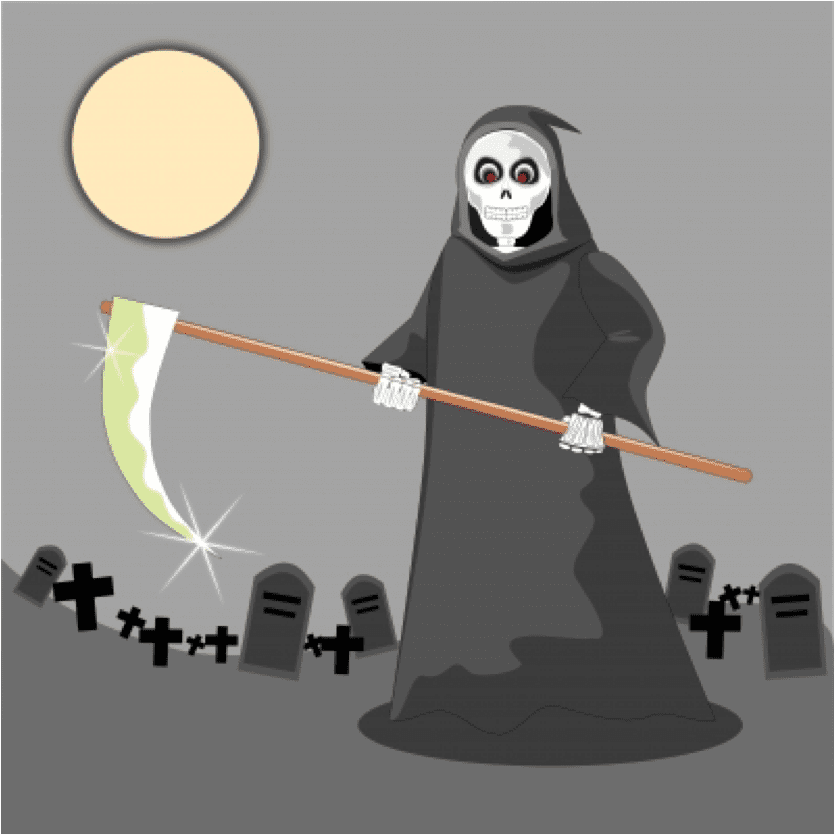Many of you may remember friends or parents telling you that for the sake of polite conversation, avoid talking about death, religion or taxes. I assumed such polite conversation implied social discussions neither too controversial nor too upsetting, which for me conjures an image of an ostrich burying its head in the sand. More typical of me would be the metaphorical image of a bull in a china shop. To prove my point, today’s blog is all about death.
I wanted to open up a conversation around death because as a society, we appear more reluctant to teach our children about death than about birth control. Such avoidance typifies fear of the unknown or lack of awareness; and like the ostrich, we duck our head in the sand and proclaim — what we don’t know won’t hurt us. Of course, anyone with any life experience at all realizes that ignorance is only temporarily blissful. Life loves to promote our learning, which means we are likely, sooner rather than later, to get lessons on exactly what we know the least about. How else will we become knowledgeable? We gain knowledge by having experiences, by going where we have not gone before.
So, let’s talk about death!
The British Humanist Association posed this question, What should we think about death?, in its two-minute video. In summary, the film reminds us that there is no proof of life after death, and suggests our atoms merely return to the earth so our best bet for a good life is to live purposefully in the here and now. Although I won’t be signing up to become a card-carrying British Humanist any time soon, my experiences have proven to me that good living is purposefully present to the here and now. However, I would also have to agree with a follow-up comment from Stephen Ausden concerning the afterlife — it is worth noting that absence of evidence is not evidence of absence.
Let’s look at another possible narrative about death, which is evidenced in a poem written by Mary Frye. My Uncle John recently passed away and printed on his memorial card was her poem.
Do Not Stand At My Grave & Weep
Do not stand at my grave and weep.
I am not there.
I do not sleep.
I am a thousand winds that blow.
I am the diamond glints on snow.
I am the sunlight on ripened grain.
I am the gentle autumn’s rain.
When you awaken in the morning’s hush,
I am the swift uplifting rush,
Of quiet birds in circled flight.
I am the soft stars that shine at night.
Do not stand at my grave and cry.
I am not there.
I did not die.
Mary Frye
The first three stanzas of the poem appear to echo the humanist’s version of death until you read, “I am not there. I did not die.” So, where is she? What did not die? We know the physical body dies so that cannot be what Mary is referring to. Is she referring to the spiritual body, to our awareness of ourselves — our consciousness? And, of course, the answer to this is what remains unknown to us, and will only become known through our experience of death. Or, is there another way for us to familiarize ourselves with what ‘death’ feels like before our actual experience of it?
What I am wondering is this — does the silence and spaciousness of deep meditation most resemble physical death? Meditation brings me into the pauses between breaths and sensations where I suspect I am closest to what the experience of death feels like — no mind, no body, just awareness.
Why does the promise in Mary’s poem of not dying resonate with me? with so many others? Or, is that my wishful thinking? It feels more than wishful thinking or fear of dying. It feels like the truth. If I am truly not my body and mind, but part of a vast creative intelligence witnessing and creating this physical plane, then how can my life end when this body dies?
I am curious about your thoughts on what comes after life ends for the body. Share your comments below, if you like.
If you want to experience meditation, click here.





